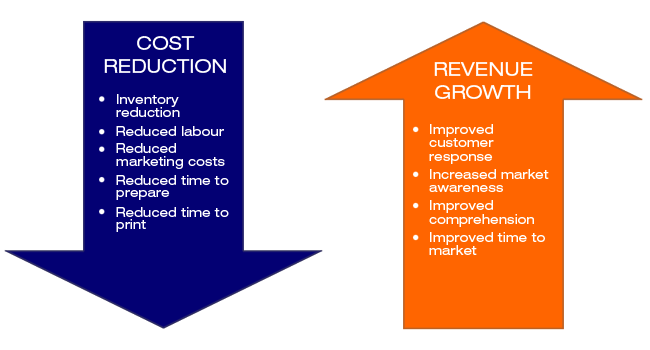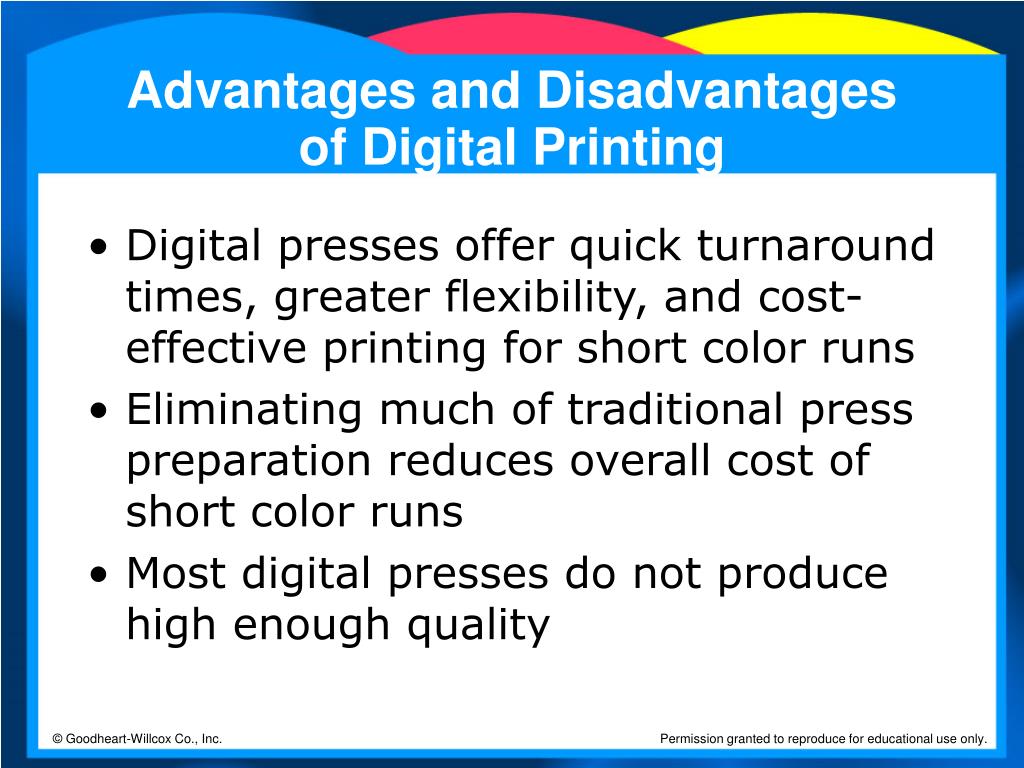Indicators on Digital Printing You Should Know
Indicators on Digital Printing You Should Know
Blog Article
The 2-Minute Rule for Digital Printing
Table of ContentsNot known Details About Digital Printing Rumored Buzz on Digital PrintingIndicators on Digital Printing You Should KnowSome Of Digital PrintingThe Greatest Guide To Digital PrintingThe 15-Second Trick For Digital Printing
Variable information printing, such as direct mail with personalized codes and addresses, is preferably suited for digital printing. Digital quick printing just requires 4 actions of layout, review, printing and binding to get whatever done. Digital fast printing has an unparalleled benefit: print on need.According to PMMI, electronic printing enables brands and manufacturers to react promptly to consumer demands while improving the supply chain, minimizing warehousing price and waste, and appreciating faster time to market. That all audios great, however how does this modern technology do all that? The major differentiator of these modern technologies is that there are no set-up charges and no plates with digital printing.
Not known Facts About Digital Printing
This results in quicker turnaround time and reduces cost when using electronic printing.
Quick manufacturing indicates obtaining your item to market much faster. It also means it's easier and faster to make changes in the future, when you transform a dish, add a SKU, or produce seasonal packaging. Digital printing is very versatile, so it's easy to make modifications to the plan layout promptly. It all returns to home plates.
With standard printing approaches, short-run printing is just not possible. Because a wonderful design can make or damage your product, digital printing regularly creates top quality, clear and colorful graphics each time.
Digital printing is the process of printing digital-based pictures directly onto a range of media substrates. There is no need for a printing plate, unlike with balanced out printing. Digital data such as PDFs or desktop publishing files can be sent directly to the digital printing press to print theoretically, image paper, canvas, fabric, synthetics, cardstock and various other substratums.
Everything about Digital Printing
According to PMMI, digital printing enables brands and manufacturers to react rapidly to consumer demands while boosting the supply chain, decreasing warehousing expense and waste, and taking pleasure in faster time to market. That all audios great, but just how does this technology do all that? The major differentiator of these modern technologies is that there are no set up costs and no plates with electronic printing.
According to Wikipedia, the best distinction between electronic printing and typical approaches such as lithography, flexography, gravure, or letterpress is that there is no requirement to replace printing plates in electronic printing, whereas in these analog printing techniques the plates are continuously changed. This leads to quicker turn-around time and decreases cost when using electronic printing.

Little Known Facts About Digital Printing.
With conventional printing approaches, short-run printing is simply not feasible. Since a wonderful layout can make or break your product, digital printing consistently develops top quality, clear and vibrant graphics each time.

According to PMMI, electronic printing permits brands and suppliers to respond swiftly to consumer needs while improving the supply chain, decreasing warehousing cost and waste, and delighting in faster time to market. That all noises excellent, yet just how does this technology do all that? The major differentiator of these innovations is that click now there are no set-up fees and no plates with electronic printing.
Some Known Facts About Digital Printing.
According to Wikipedia, the biggest difference in between electronic printing and standard techniques such navigate to this site as lithography, flexography, gravure, or letterpress is that there is no demand to change printing plates in electronic printing, whereas in these analog printing methods home plates are consistently replaced. This causes quicker turn-around time and lowers expense when utilizing digital printing.
Digital printing is very adaptable, so it's easy to make modifications to the plan design promptly. It all goes back to the plates.

Some Known Facts About Digital Printing.
Digital printing is the procedure of printing digital-based images directly onto a selection of media substratums. There is no demand for a printing plate, unlike with countered printing. Digital files such as PDFs or desktop publishing files can be sent out directly to the digital printing Website press to publish theoretically, picture paper, canvas, textile, synthetics, cardstock and various other substratums.
Report this page